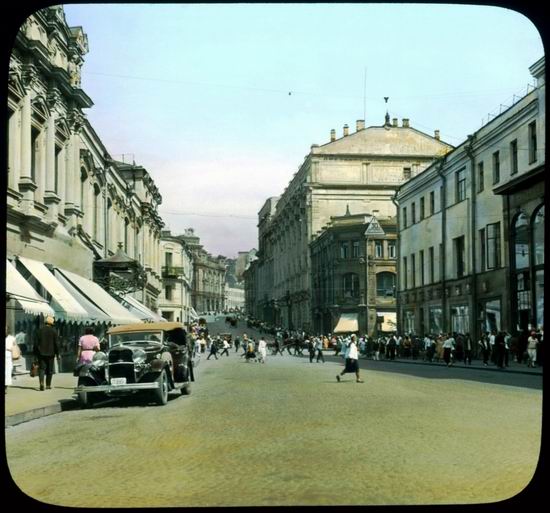 Kuznetsky Most street, here
Kuznetsky Most street, here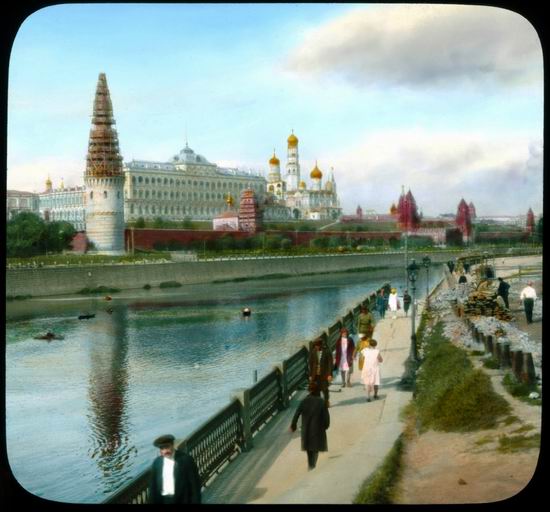 The Kremlin from the Bolshoi Kamenny Most, here
The Kremlin from the Bolshoi Kamenny Most, hereThe Library of the University of California in 1971 received the photo legacy of photographer and travelogue lecturer Branson DeCou from his heirs. Between 1921 and 1941 DeCou traveled all over the world, and took about 8 thousand glass slides, not only on the historical monuments but also on the everyday life of the visited cities. He then regularly held presentations with projected slides in various cities of the USA. The library has recently started the digitization of the hand-colored slides.
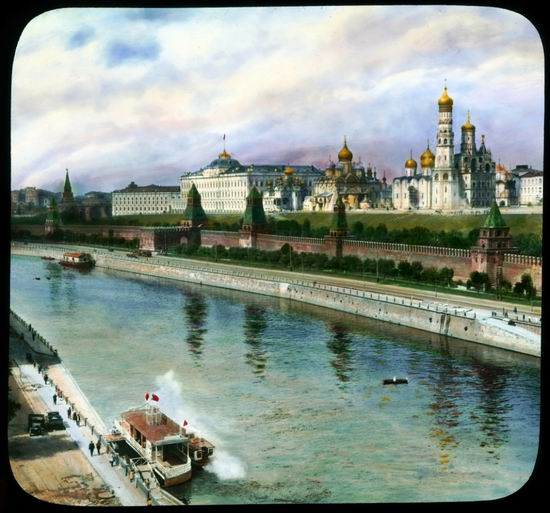 The Kremlin from the Bolshoi Moskvoretsky Most, here
The Kremlin from the Bolshoi Moskvoretsky Most, hereRussian blogger Nikolas11 over the past few days looked over the already digitized material and picked out the photos representing Moscow. In addition, he also placed them, with a laborious work, on the map of the collective site “The photos of Old Moscow”. The links “here” in the following captions lead you to the respective point of the map.
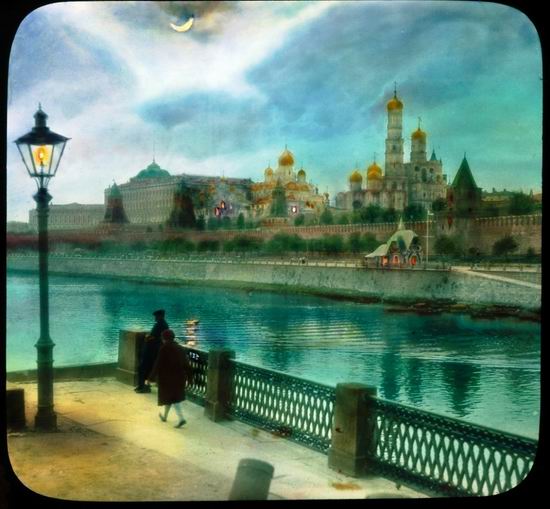 The Kremlin from the Bolshoi Moskvoretsky Most, here
The Kremlin from the Bolshoi Moskvoretsky Most, hereThese pictures are unique not only because of their fascinating atmosphere or the attentive representation of street life and faces. But also because perhaps this was the last moment when the old Moscow could be seen still intact and without the erosion of the following decades. Stalin had just recently blocked the new economic policy announced ten years earlier, and the period of collectivization and repressions as well as of the Socialist transformation of Moscow began. On almost each of the following pictures we see – for the last time – monuments that did not survive the end of the 30s.
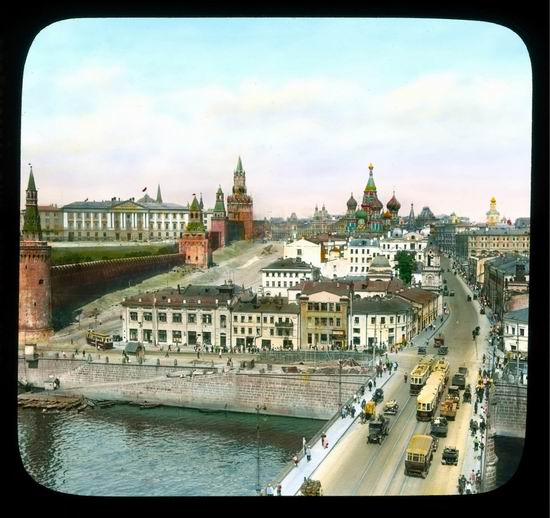 The Mosvkoretskaya street and the Vasilevsky spusk from the Moskvoretsky bridge, here
The Mosvkoretskaya street and the Vasilevsky spusk from the Moskvoretsky bridge, here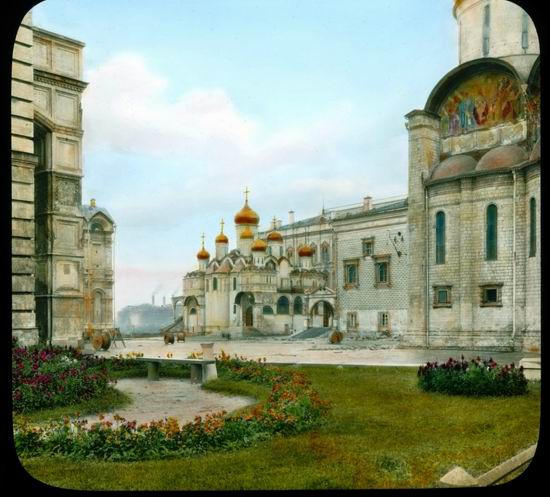 Kremlin, Granovitaya Palace, here
Kremlin, Granovitaya Palace, here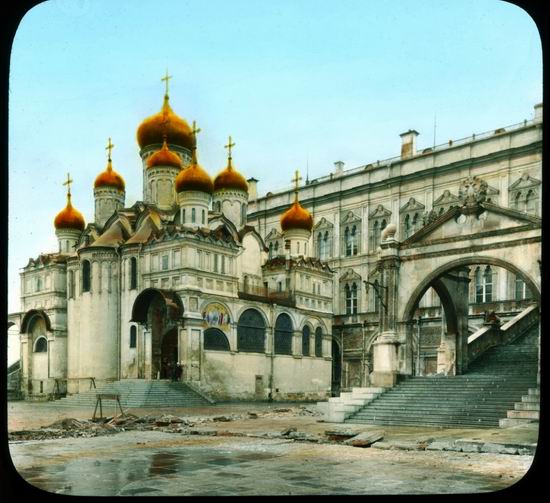 Kremlin, the Blagoveschensky (Annunciation) cathedral, here
Kremlin, the Blagoveschensky (Annunciation) cathedral, here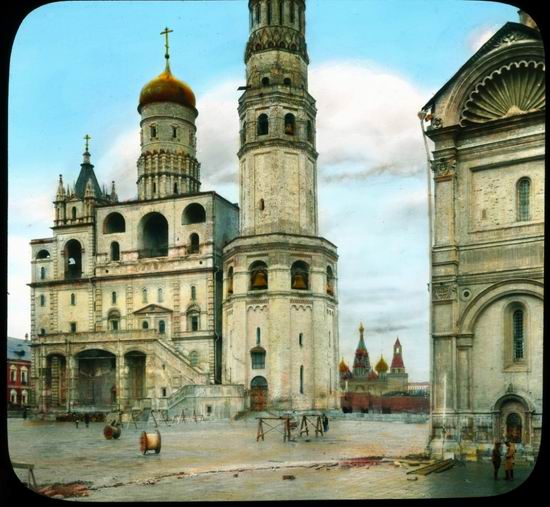 The Great Ivan bell tower, here
The Great Ivan bell tower, here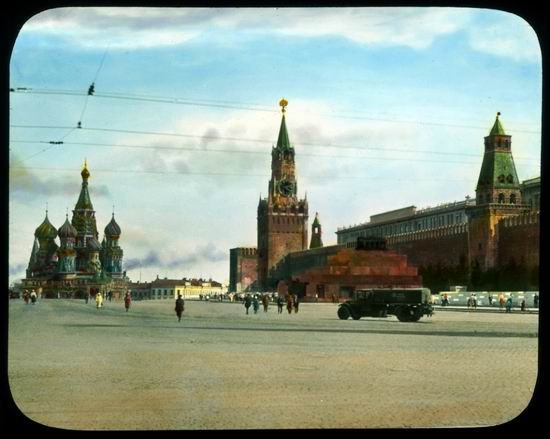 The Red Square, here
The Red Square, here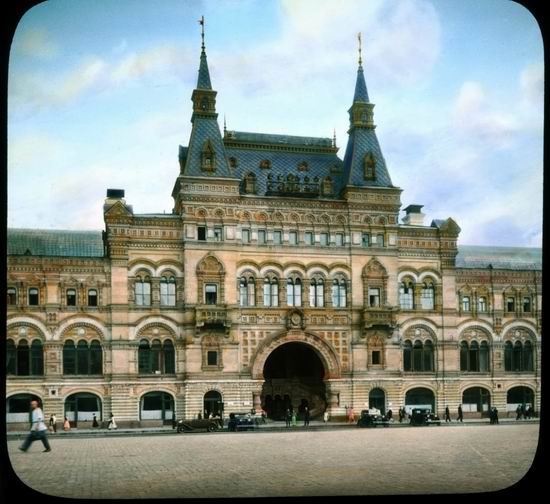 The GUM supermarket, here
The GUM supermarket, here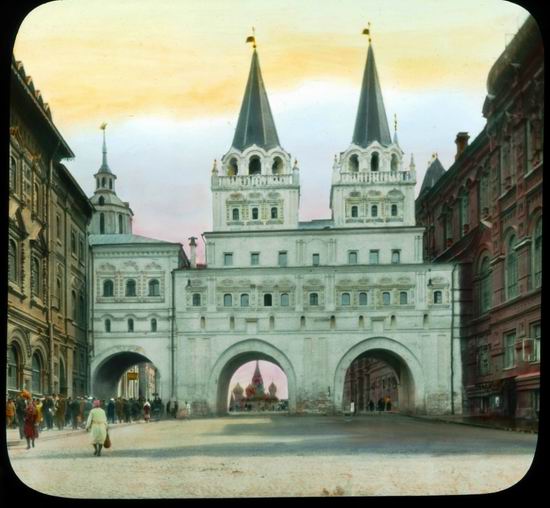 Resurrection or Iversky gate (destroyed in 1931), here
Resurrection or Iversky gate (destroyed in 1931), here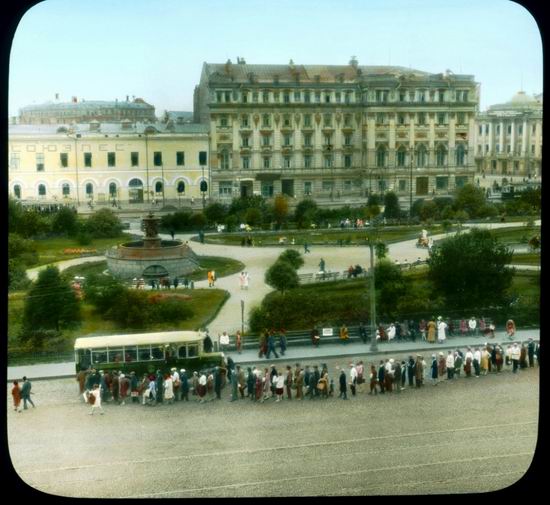 Sverdlov (Theatre) square, here
Sverdlov (Theatre) square, here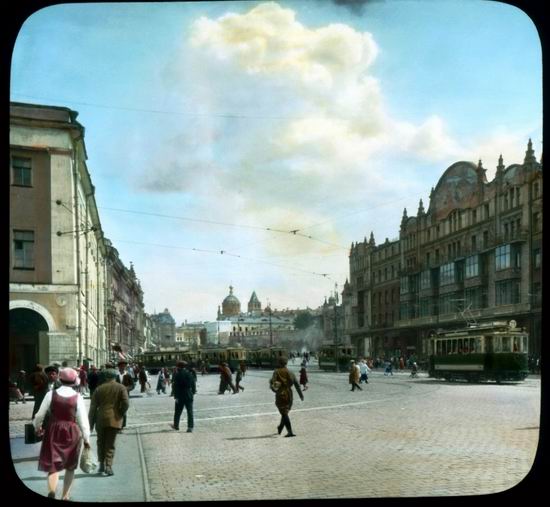 Teatralny proezd towards the Lubyanka, here
Teatralny proezd towards the Lubyanka, here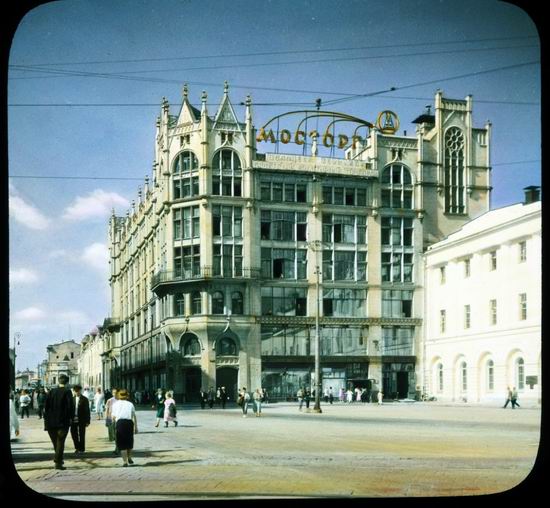 The TsUM supermarket, here
The TsUM supermarket, here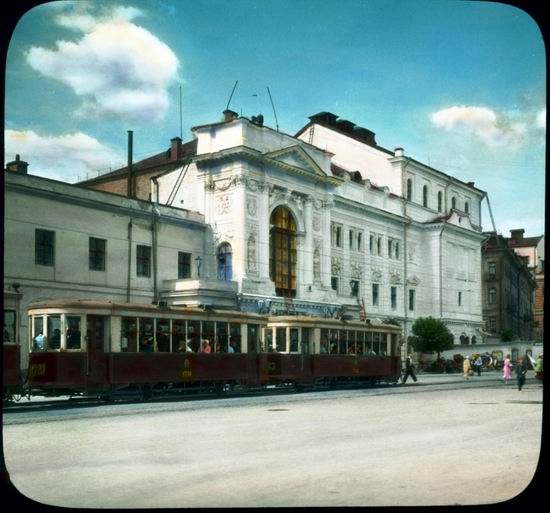 The Second Moscow Art Theatre (then Central Children’s Theatre), here
The Second Moscow Art Theatre (then Central Children’s Theatre), here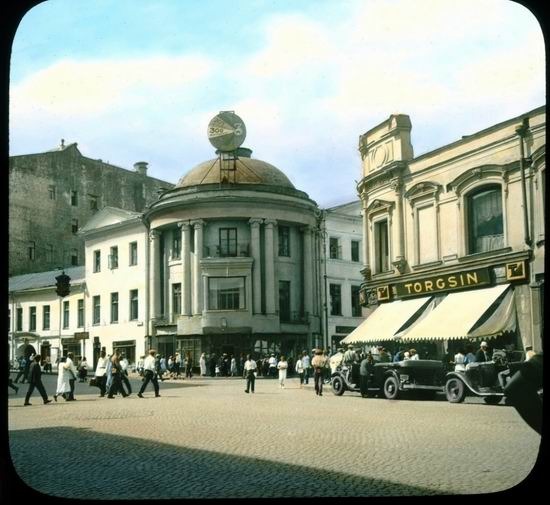 TORGSIN, the “foreign currency” shop for foreigners (1931-36), here
TORGSIN, the “foreign currency” shop for foreigners (1931-36), here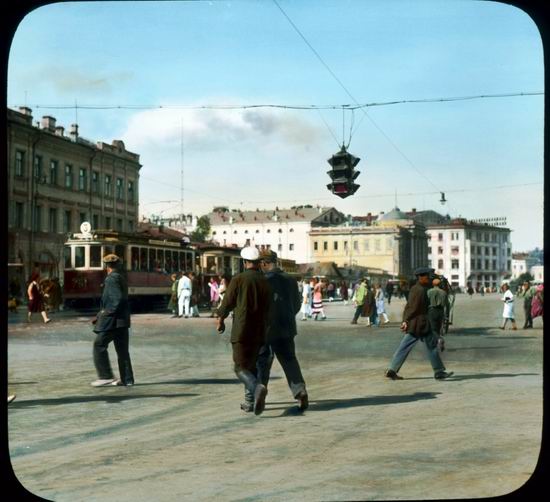 Ohotny Ryad street, here
Ohotny Ryad street, here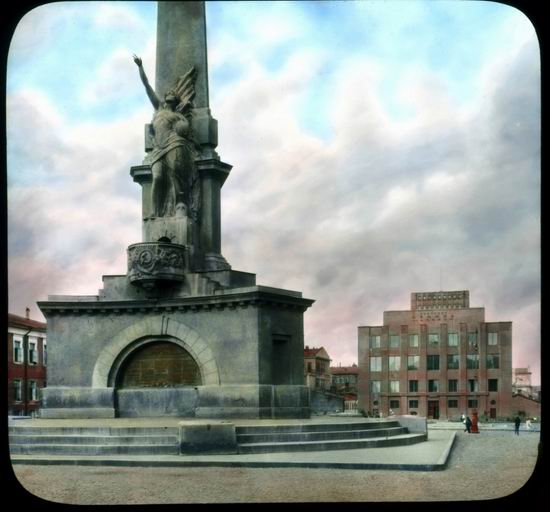 The Soviet square, here
The Soviet square, here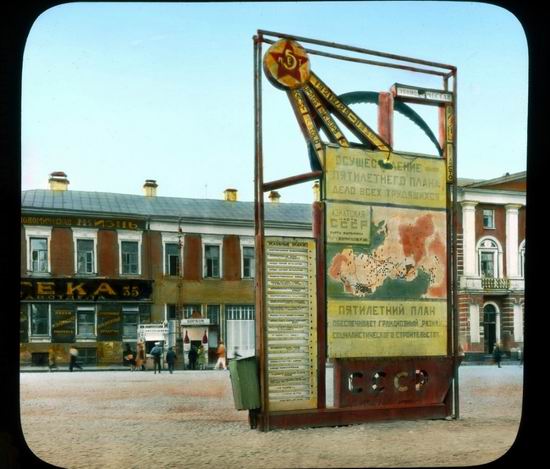 Agitation poster for the five years plan on the Soviet square, here
Agitation poster for the five years plan on the Soviet square, here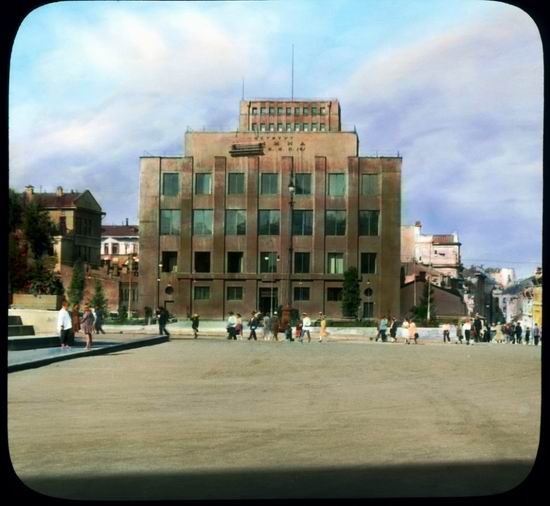 Soviet square, Lenin Institute, here
Soviet square, Lenin Institute, here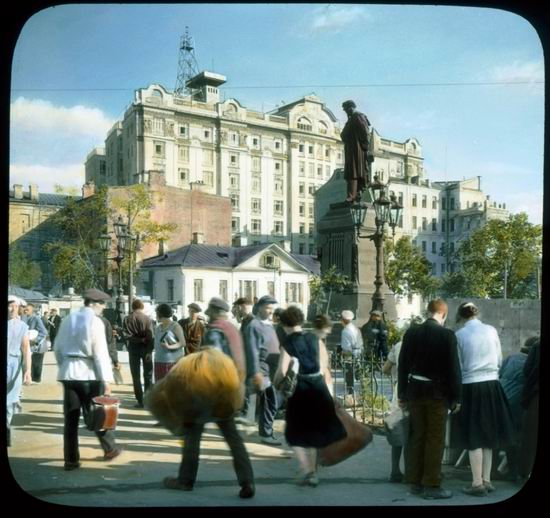 Strastnaya square (where the giant lion was sleeping), here
Strastnaya square (where the giant lion was sleeping), here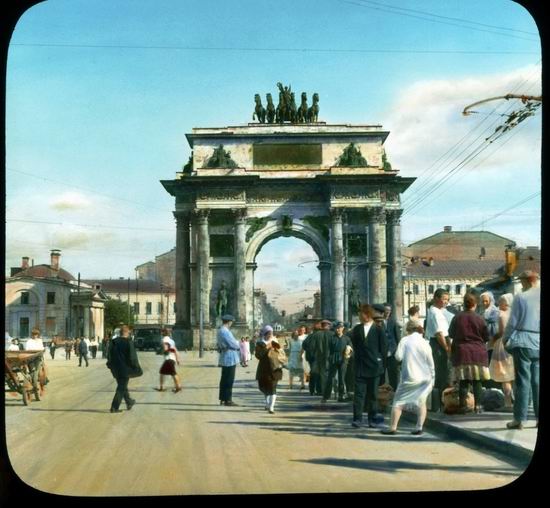 Tversky square, with the still standing New Triumphal Gate, here
Tversky square, with the still standing New Triumphal Gate, here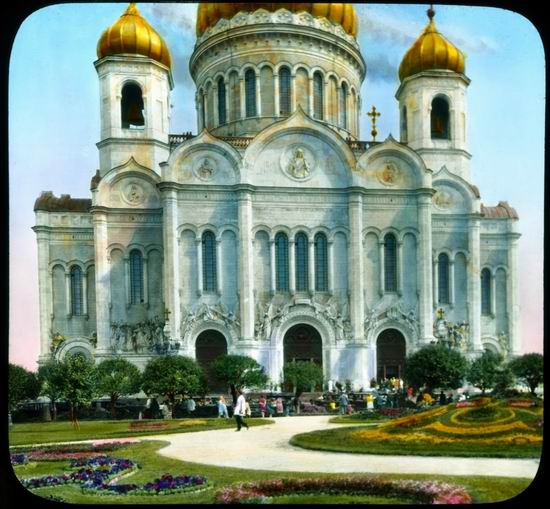 The Christ Savior cathedral, blown up in 1931, here
The Christ Savior cathedral, blown up in 1931, here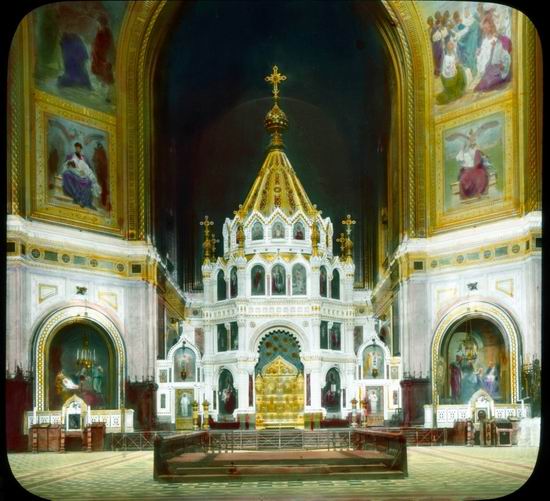 The Christ Savior cathedral, here
The Christ Savior cathedral, here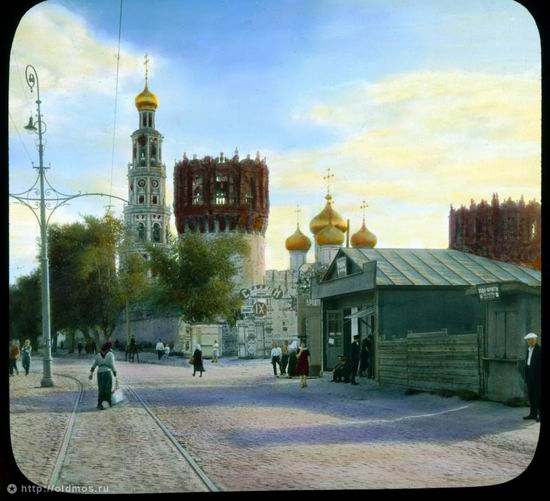 The Novodevichi monastery, here
The Novodevichi monastery, here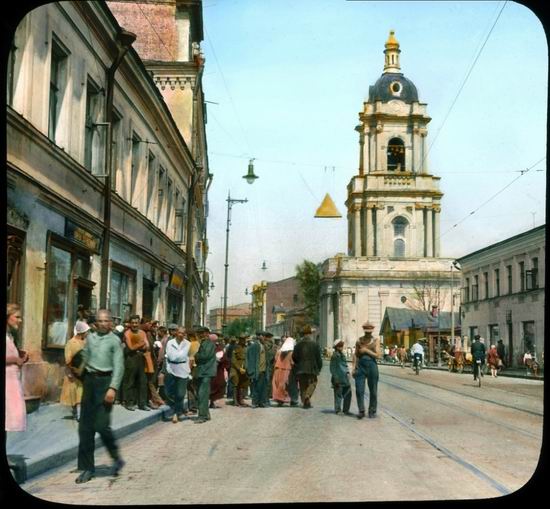 The Pyatnitsa street with the Paraskeva Pyatnitsa church (destroyed in 1935), here
The Pyatnitsa street with the Paraskeva Pyatnitsa church (destroyed in 1935), here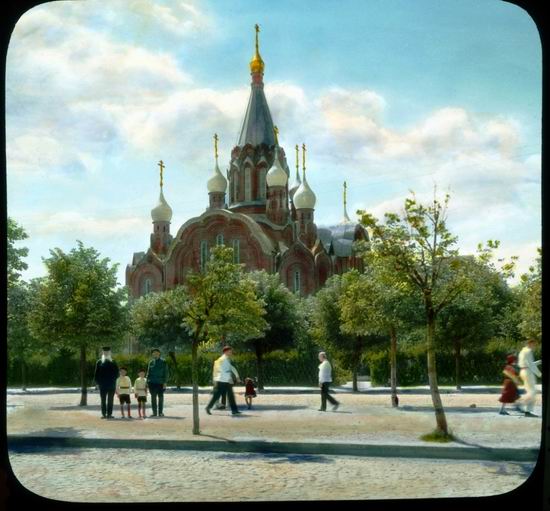 The Resurrection of Christ church in Sokolniki, here
The Resurrection of Christ church in Sokolniki, here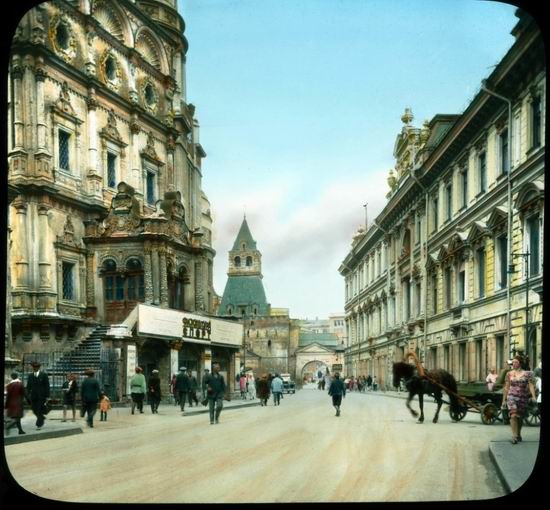 Tower of the Church of St. Pantelemon of Athos, here
Tower of the Church of St. Pantelemon of Athos, here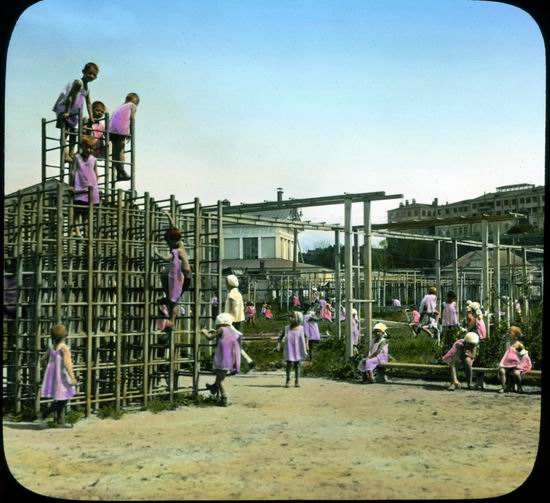
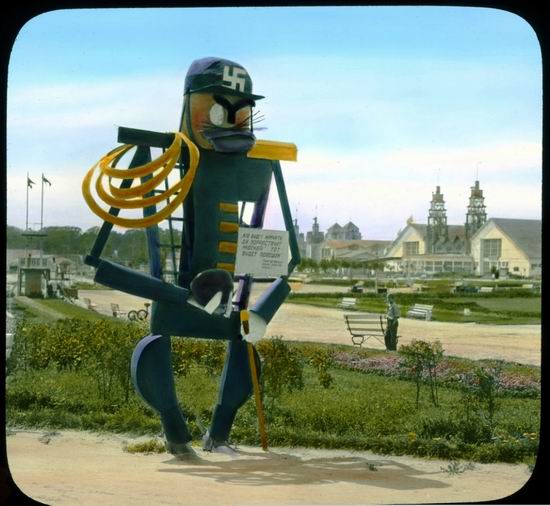
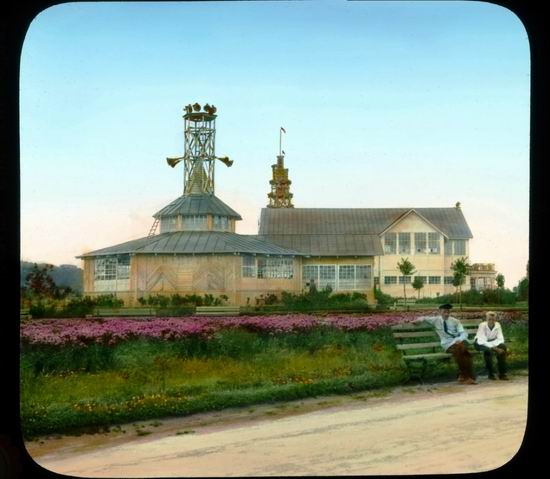
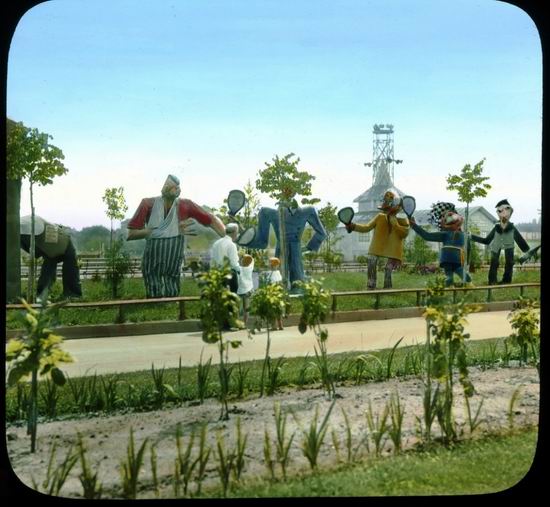
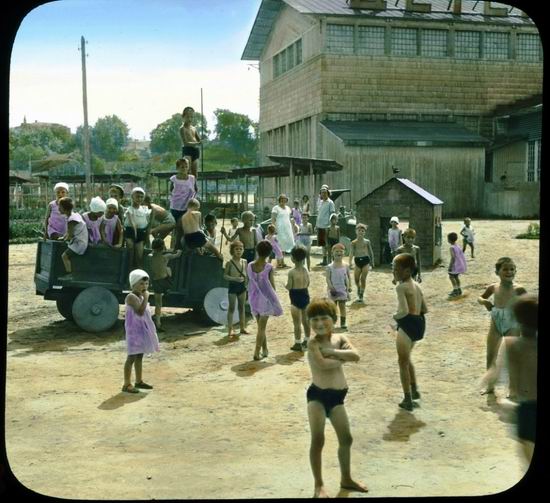
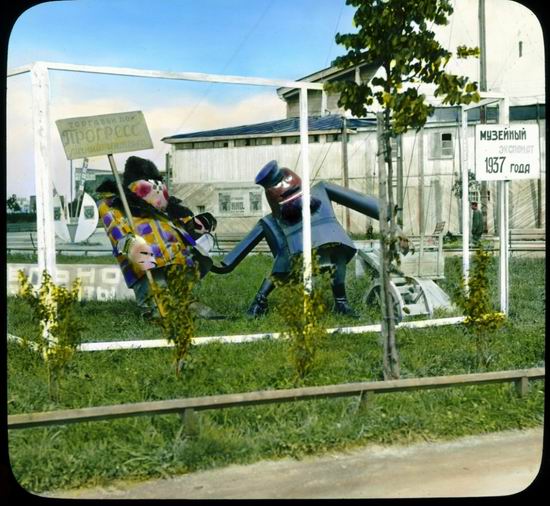 Anti-NEP propaganda
Anti-NEP propaganda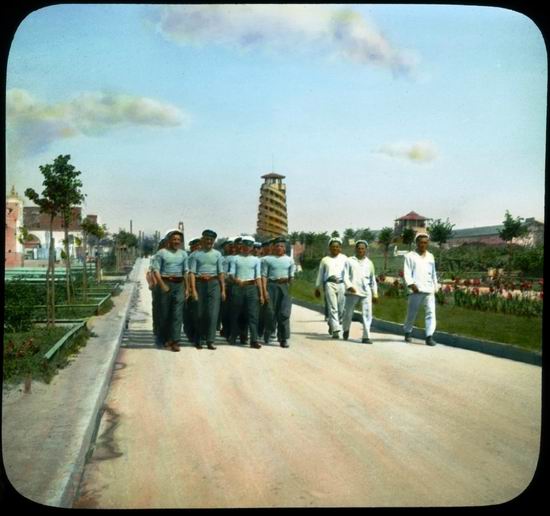
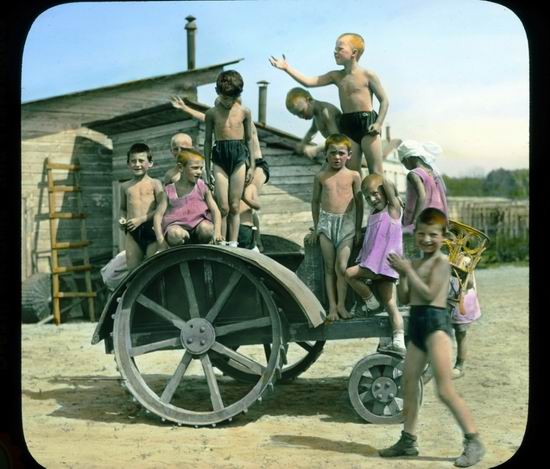
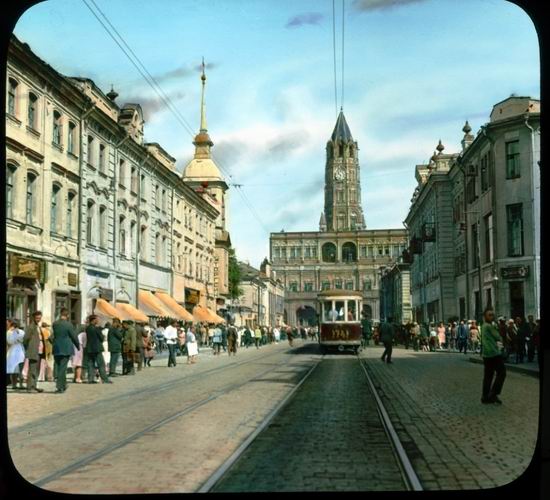 Sukharev Tower, blown up in 1934, here
Sukharev Tower, blown up in 1934, here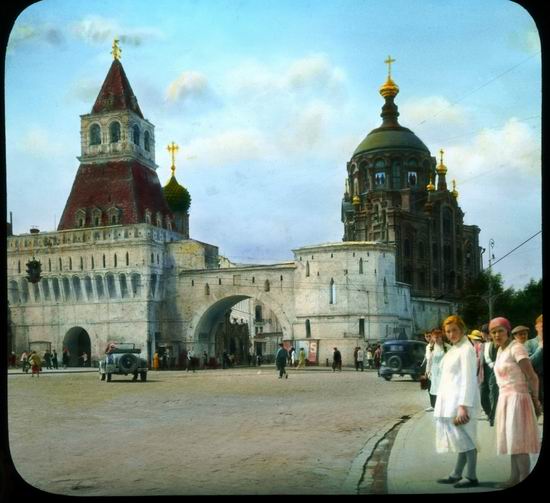 The Vladimir Gate on Lubyanka square, destroyed in 1934, here
The Vladimir Gate on Lubyanka square, destroyed in 1934, here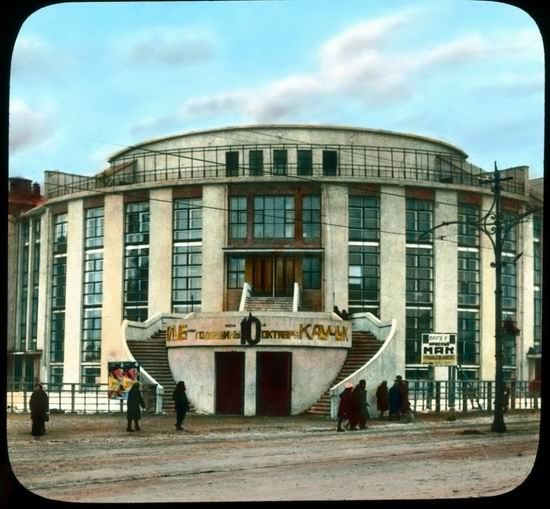 House of Culture of the “Kauchuk” factory, here
House of Culture of the “Kauchuk” factory, here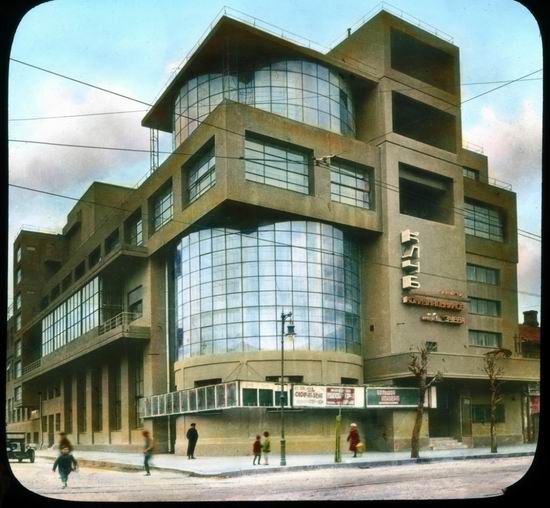 The “Zuev” House of Culture, here
The “Zuev” House of Culture, here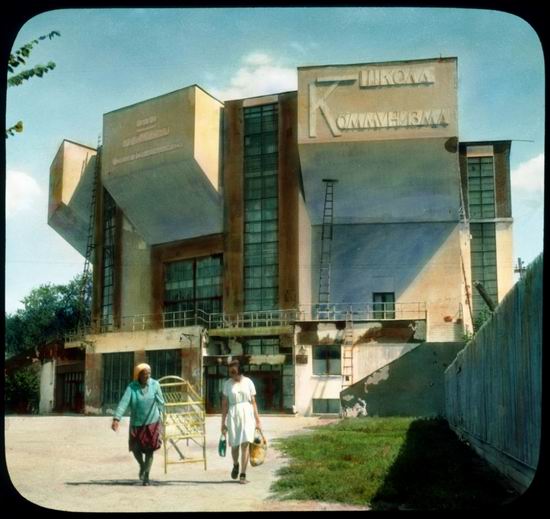 The “Rusakov” Workers’ Club, here
The “Rusakov” Workers’ Club, here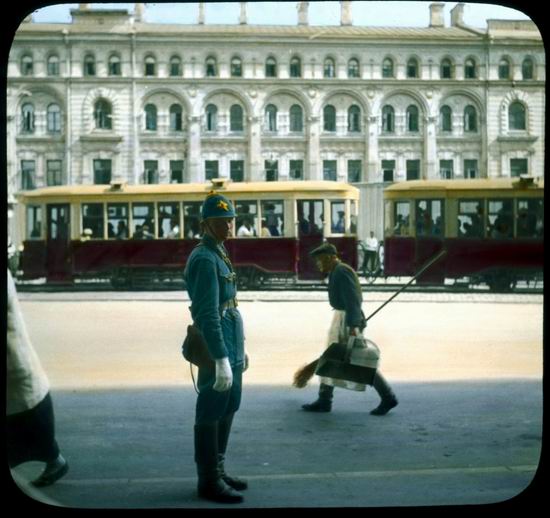 Moiseevskaya square, here
Moiseevskaya square, here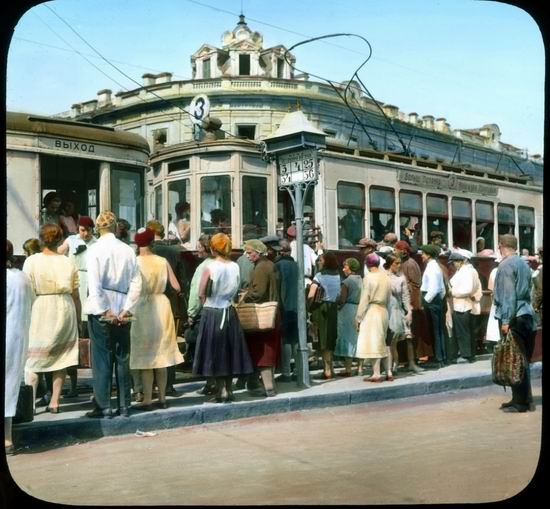 Tram station on the Moiseevskaya square, here
Tram station on the Moiseevskaya square, here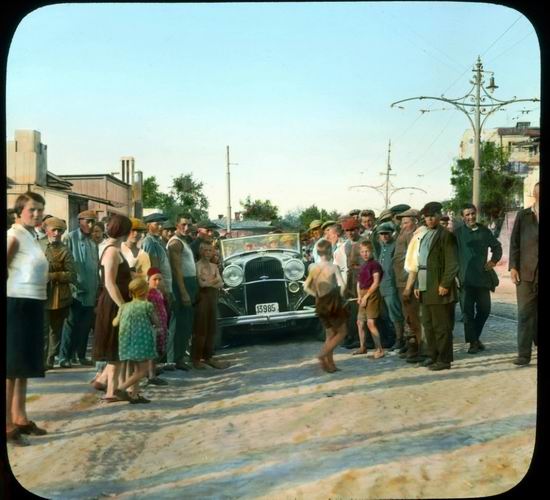 New car in old Moscow, here
New car in old Moscow, here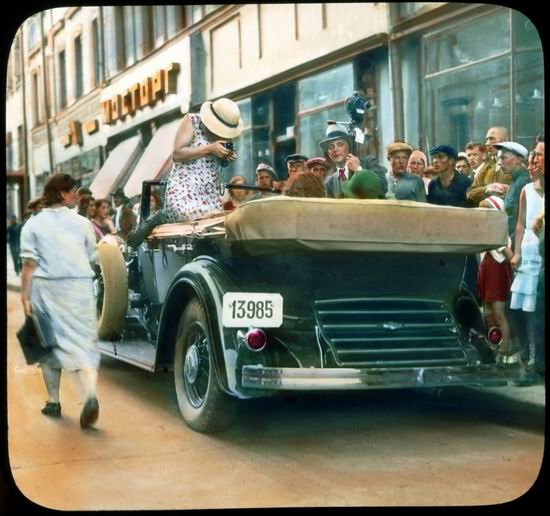 Foreigners taking photos at MosTorg, here
Foreigners taking photos at MosTorg, here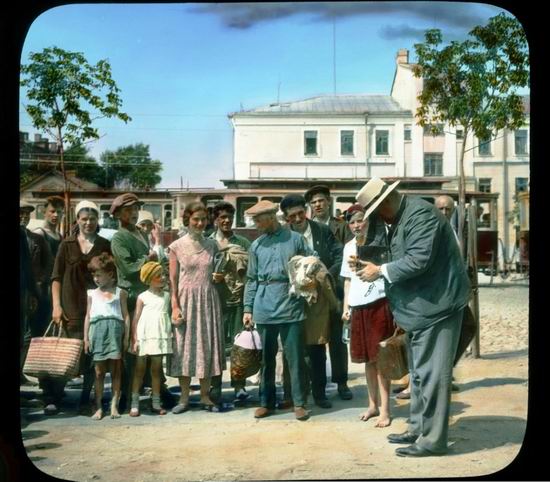 Foreigner taking photos, here
Foreigner taking photos, here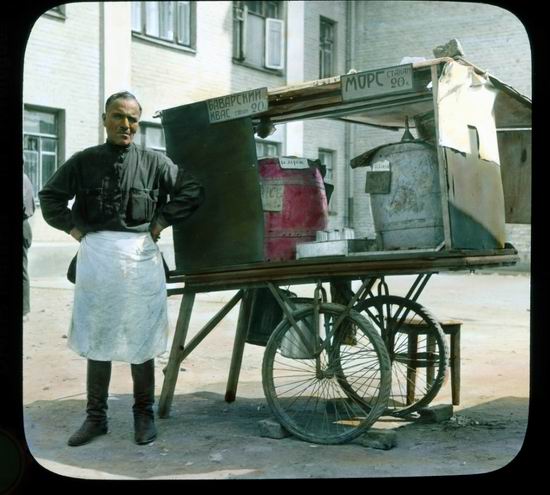 Kvas and mors (berry beer) seller, here
Kvas and mors (berry beer) seller, here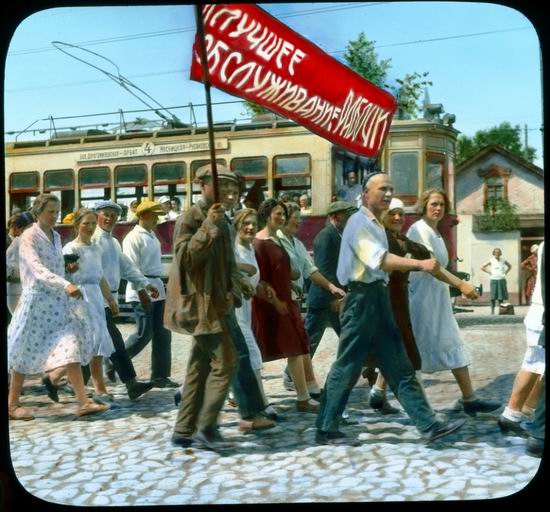 “A better customer service for the workers!”, here
“A better customer service for the workers!”, here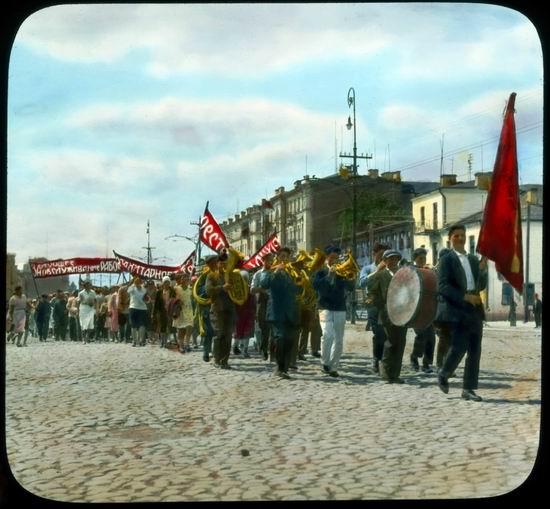 Manifestation along Krasnoprudnaya street, here
Manifestation along Krasnoprudnaya street, here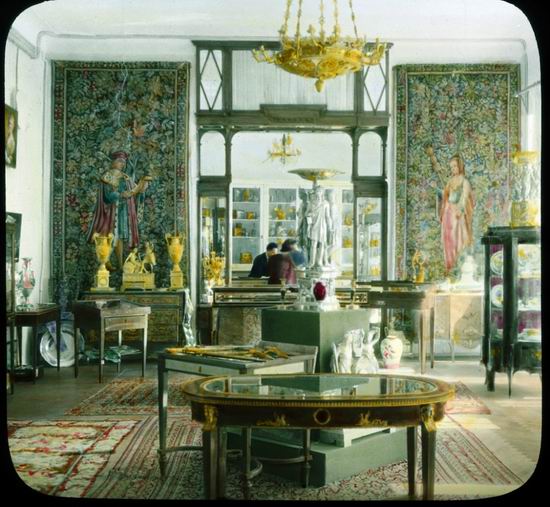 Perhaps the interior of the TORGSIN (foreign currency shop), here
Perhaps the interior of the TORGSIN (foreign currency shop), here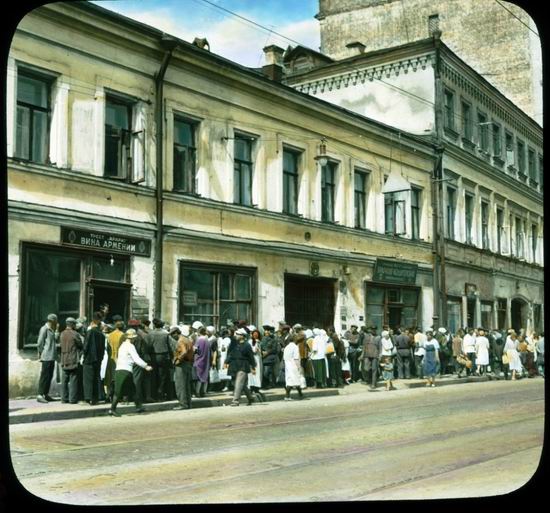 Queue in front of the shop of Armenian drinks along the Pyatnitsa street, here
Queue in front of the shop of Armenian drinks along the Pyatnitsa street, here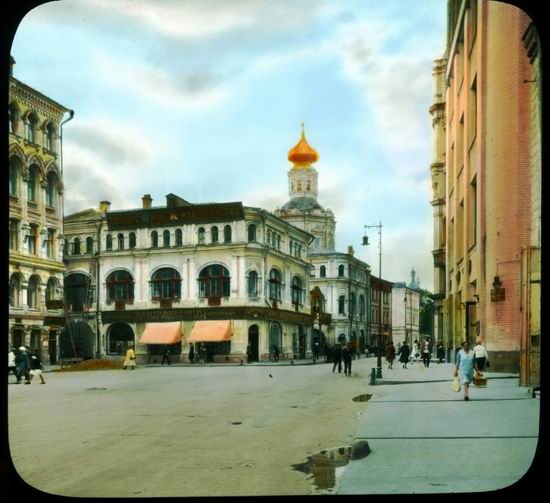 Birzhevaya square, here
Birzhevaya square, here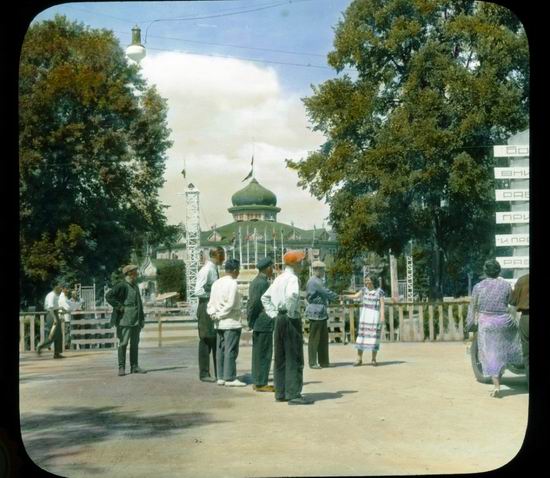 Sokolniki, Green theatre, here
Sokolniki, Green theatre, here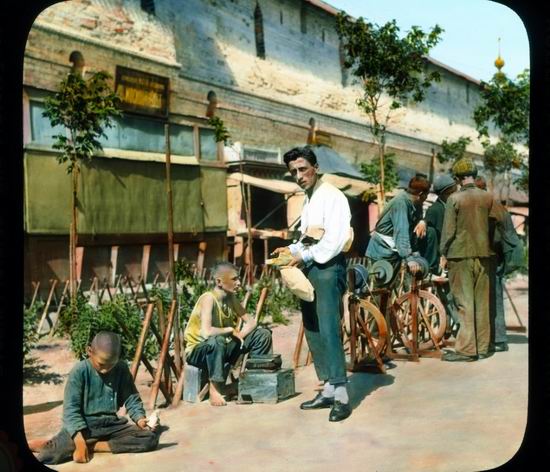 Sylvester Stallone’s father selling foreign currency at the wall of Kitaigorod :) here
Sylvester Stallone’s father selling foreign currency at the wall of Kitaigorod :) here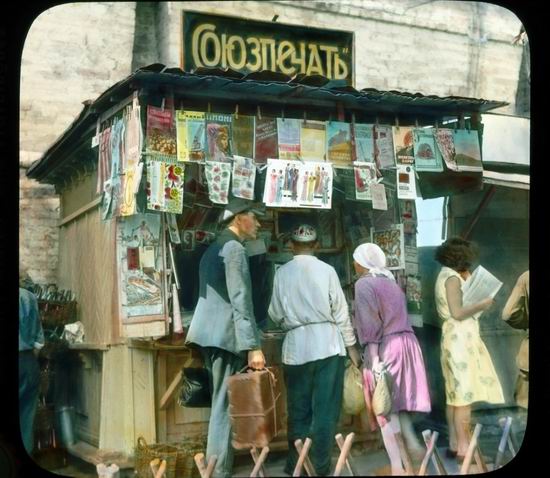 “Soyuzpechat”, newspaper seller at the wall of Kitaigorod, here
“Soyuzpechat”, newspaper seller at the wall of Kitaigorod, here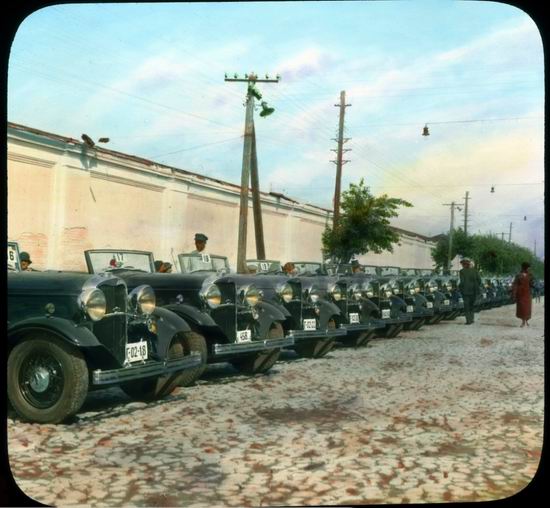 Taxi station at the Leningrad railway station, here
Taxi station at the Leningrad railway station, here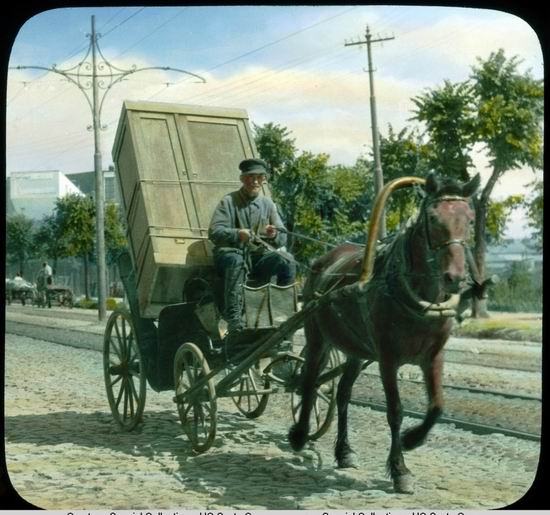 Carter along the Strominka, here
Carter along the Strominka, here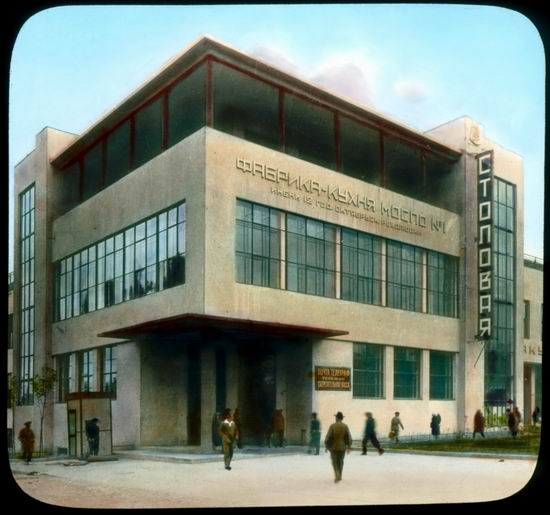 Worker’s Canteen Nº. 1, here
Worker’s Canteen Nº. 1, hereThe post will be continued with the 1931 Leningrad photos by DeCou. Check back soon!
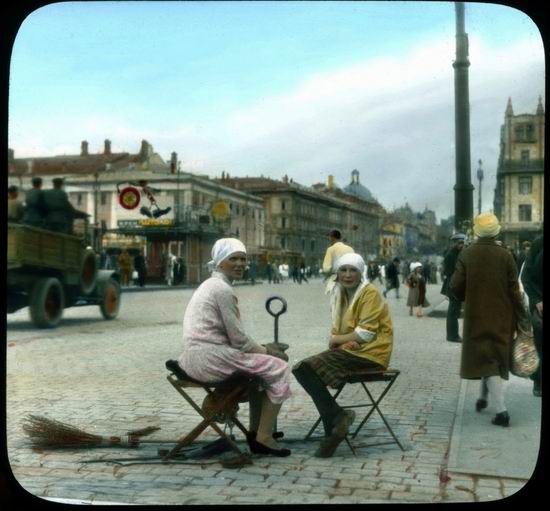
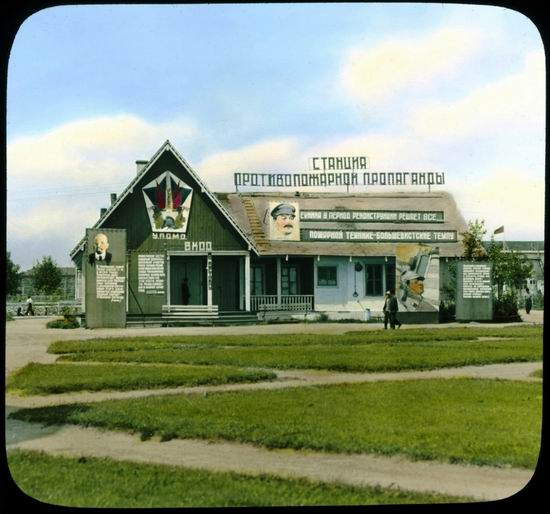
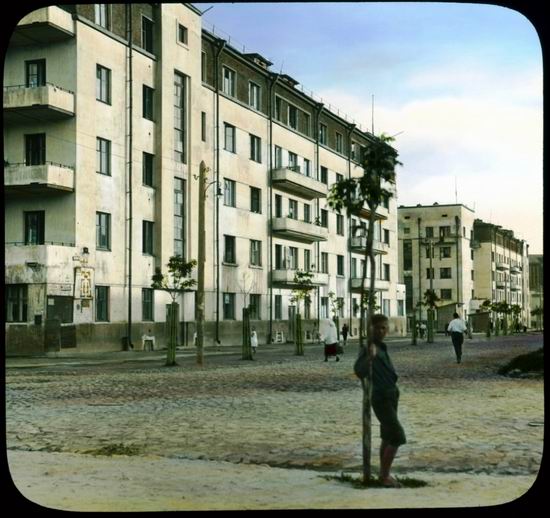

























































9 comentarios:
Fantastic photos, and I love the Old Moscow site! Can anybody identify the huge wall looming at the left of the TORGSIN photo?
Thanks for sharing! A couple points for nitpicking sake: mors is sweetened cranberry juice drink (nonalcoholic) or sometimes other kinds of nonalcoholic fruit punch. Caoutchouc is the proper English spelling of rubber base, actually not much used in modern English.
Thanks, Москва, I’m always grateful for your comments – you’re the favorite nitpicker of Río Wang.
Concerning “Kauchuk”, I also hesitated whether to consider it the name of the factory (and transliterate it as I did) or its main profil: but in the latter case I either should have opted for “Caoutchouc” which I felt hopelessly awkward, or for a larger explanative translation. So finally I decided to give a plain transliteration whose meaning will be clear for the English reader anyway.
As to морс, whenever I took it on the streets of Russian cities, I always felt it slightly fermented. And the Russian Wikipedia also quotes from an authoritative source: Содержание алкоголя в морсе - не менее 1%, содержание сухих веществ - 3,5-4,4%.
Hehe, it's a bit easier to try improving your wonderful blog one word at a time than to contribute whole sections!
Russian wikipedia is surprisingly off-base about mors. The only online reference there is to a cookbook with a dozen mors entries, all decidely tee-totaling. In fact you can trace barreled mors to XVI c. editions of the Domostroy homemaker manual (which absolutely insists on using yeast-free barrels). Supposedly it was a Byzantine borrowing <= Latin mulsum, a honey-sweetened drink.
But the mors gets murky at this point, because mulsum was alcoholic, and mors-based desert mixers are known as simply mors in a number of European countries.
Nowadays, single-drink pouches and liter boxes of morses are all over Russia, and the grand irony of the XXI century is that they make a lot of the stuff from American cranberry juice concentrate ... that's not half century after Yuliy Kim famously sang,
"все равно по количеству клюквы
не догонит Америка нас!"
And Kauchuk ... you may be right, but in the early 30s all rubber was still natural product, and the French word might have appropriately carried the flavor of the time. As the Congolese slaves of the Belgian King used to sing on plantations,
"The White Man demands Caoutchouc, Caoutchouc, Caoutchouc
But we reply: Caoutchouc, Caoutchouc, Caoutchouc is Death!"
After the advent of synthetic rubber, Russian and English parted ways. In English Caoutchouc was strictly Natural, but in Russia, everything prior to vulcanization.
I'm a bit partial both to the Old Moscow workers' club with its concerts, and to the stretchu polymer itself too. My granny met my grandfather through her work at the world's first synthetic rubber SK plant at Yaroslavl, and I interned at another, more infamous SK @ Sumgait, Azerbaijan. People don't realize that it was the Caoutchouc which gave birth to this grim city of future massacres. SK construction has been delayed by WWII; instead, a top-secret "Ozero" chlorine complex has been built across the tracks. Even the Nazi spies were unaware. In 1942, the Germans appointed management crew for the SK which didn't even churn out its first rubber until mid-50s, having been equipped with assorted "trophy" machinery from the German plants. Truly to say, Caoutchouc is death.
It is TSUM supermarket, rather than CUM :)
@ Language
The wall is just a firewall of the adjacent building
@ Anónimo: Yes, you’re right. The abbreviation was taken over without modification by negligence from the Hungarian original of the post, where CUM was the correct form. Now I change it in this English version.
Huh, I see that Araz never commented about Sumgayit!
Another connection to add ... The name of the TORGSIN currency-store chain survives in modern Russian, due to the ever-popular Murka, and archetypal Odessa underworld chanson.
Раньше ты носила туфли из Торгсина,
Лаковые туфли "на большой",
А теперь ты носишь рваные калоши,
И мильтон хиляет за тобой.
Yes, I have earlier quoted the song (even if this version only in link). Would be good to write in detail about it, so I’d be grateful for any audio version, background literature and info, and so on.
Publicar un comentario